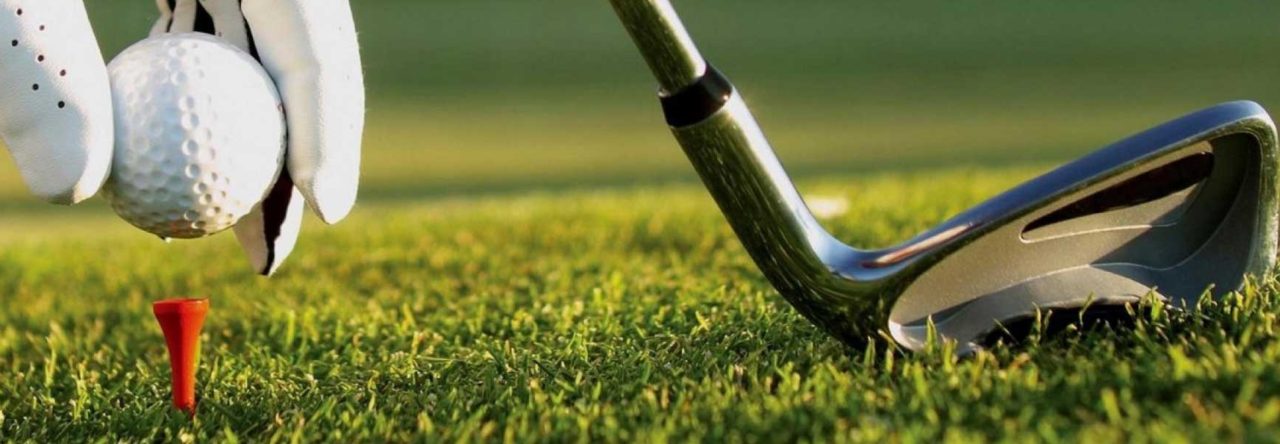We’ve all seen them, putter grips so big they can barely fit in the holes in your golf bag. While it might be a newer phenomenon around the game of golf, jumbo gripped putters have taken off in popularity over the past five years.
So what are these jumbo grip putters and why are they so popular around the green?
What are Jumbo Grip Putters?
This might not come as a surprise, but jumbo grip putters are simply that; putters with much wider diameter grips that a traditional “pistol” gripped putter.
Specifically, jumbo gripped putters typically have grips widths between 1.4 – 1.75 inches in diameter.
In comparison, a traditional putter has a grip width between 1.0 – 1.2 inches. This makes jumbo grips almost 40-75% thicker than your average putter grip.
Additionally, many traditional putter grips have a taper which is designed to make the grip skinnier as you get further away from the top of the club. Jumbo grips often do not have a dramatic taper and stay roughly the same width throughout the entire grip.

Above is a standard putter grip. Notice how thin the grip is and how it tapers off towards the width of the putter shaft.
Why Use a Jumbo Grip?
It’s great to know all of the differences between a traditional putter grip and a jumbo one, but you might be wondering; why do people use these monstrous things?
This answer, again, is also quite simple; jumbo gripped putters help golfers score better. And here’s why.
Use of Large Muscle Groups
Many golfers that struggle with putting have problems with the mechanics of their swing, not reading the green.
This problem can be seen in the rotation of a golfer’s hands at impact; something that traditional putter grips do not help correct.
Twitchy or inconsistent wrists can result in a misalignment of your clubhead as it hits the ball. This puts the ball on a different path than the one you had wanted, and ultimately, results in missed putts.
In comparison, jumbo putter grips can help a golfer’s accuracy by increasing the diameter of the putter grip.
This increase in size forces a golfer to use the larger muscle groups in their shoulders and arms when they hit the ball. These muscle groups move less dramatically than a golfer’s wrists do, which results in higher levels of accuracy around the green.
Re-Alignment of Shoulders
Another common problem golfer’s face with their putting technique is shoulder alignment.
In an ideal world, your shoulders would be completely square at setup and impact of the ball. This promotes consistent ball striking and results in good distance control.
In reality, many golfers have a dominant right hand which results in a misaligned shoulder angle. This makes solid ball striking more difficult and results in poor putting.
While this problem can be solved by switching to a left-hand-low or cross grip putting style, increasing the size of your grip is also helpful for many golfers.
With a wider grip, it is possible to putt with your thumbs next to each other during the stroke. This alignment readjusts your shoulder tilt and encourages sound putting technique.
Wrap-Up
Although they have increased in popularity, jumbo putter grips might not be for everyone. A majority of golfers still do not use them, but that margin is shrinking every day.
I, myself, actually switched over to a jumbo grip this offseason and I have really enjoyed the change so far. Only time will tell if it pays off in lower scores during the year.
If you’re interested in checking out a jumbo putter grip as well, I would recommend the Winn Golf Jumbo Excel putter grip; it’s the one I am using right now.
Another great idea is to head over to your local sporting store and try out a few of the different jumbo grips they have for sale. Many of them will vary in size and weight but trying out a variety of different grips might help you find the one that’s best for you.
With that said, thank you for joining me on another 6 Minutes With Sully. I hope you’ve enjoyed today’s topic and learned something about golf’s hottest new grip.


